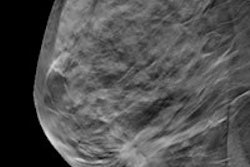Dear Women's Imaging Insider,
Ductal carcinoma in situ (DCIS) is complex and tricky. DCIS can be hidden in between 6% and 23% of mammography cases. In addition, approximately 75% to 85% of suspicious microcalcifications detected at mammography are deemed benign following biopsy.
Also, the factors associated with the progression of DCIS to invasive breast cancer are poorly understood. Most often, the literature focuses on the detection of clustered microcalcifications as they seem to be a good indication of DCIS, but only 75% of DCIS cases present with calcifications, and the sensitivity of mammography ranges from 27% to 80%.
What to do? Brazilian researchers may have found the answer. In a new study, they combine MRI and BI-RADS to detect DCIS. How did the two perform? Find out.
In other news in your Women's Imaging Community, mammography screening in Turkey remains patchy. In spite of Turkey's growing income levels, cancer screening coverage continues to be relatively poor among women, and their educational level, access to social security, and lifestyle factors have a crucial impact on screening rates, researchers have found. Read more.
In terms of newer modalities, we have two stories that will interest you. The first is on digital breast tomosynthesis (DBT). The second is on photon-counting breast CT.
Our article on DBT features a study that found combining 3D DBT with 2D mammography images -- both actual and synthetic -- finds more cases of breast cancer than mammography alone, especially in younger women and those with dense breasts. But it also increases recall rates, according to the study published online in the Lancet.
The article on a photon-counting breast CT study comes from acclaimed researcher Willi Kalender, PhD. He found breast CT with a prototype photon-counting scanner offers higher resolution than what's been reported for other types of breast imaging technologies. Another advantage of photon-counting CT is its efficient use of radiation.
In sad news, Dr. Maria Emília Silvestre, president of the ECR in 1987 and an important figure in Portuguese radiology, died on 18 June at the age of 84. She was instrumental for Portuguese radiology, especially in the field of oncologic radiotherapy and breast cancer screening, according to the Portuguese Society of Radiology and Nuclear Medicine. Did you know her? Leave us a comment in our Forums.
Be sure to head on over to the Women's Imaging Community for more women's imaging news, or scroll below this message. As always, I enjoy hearing from you, so contact me anytime.




















